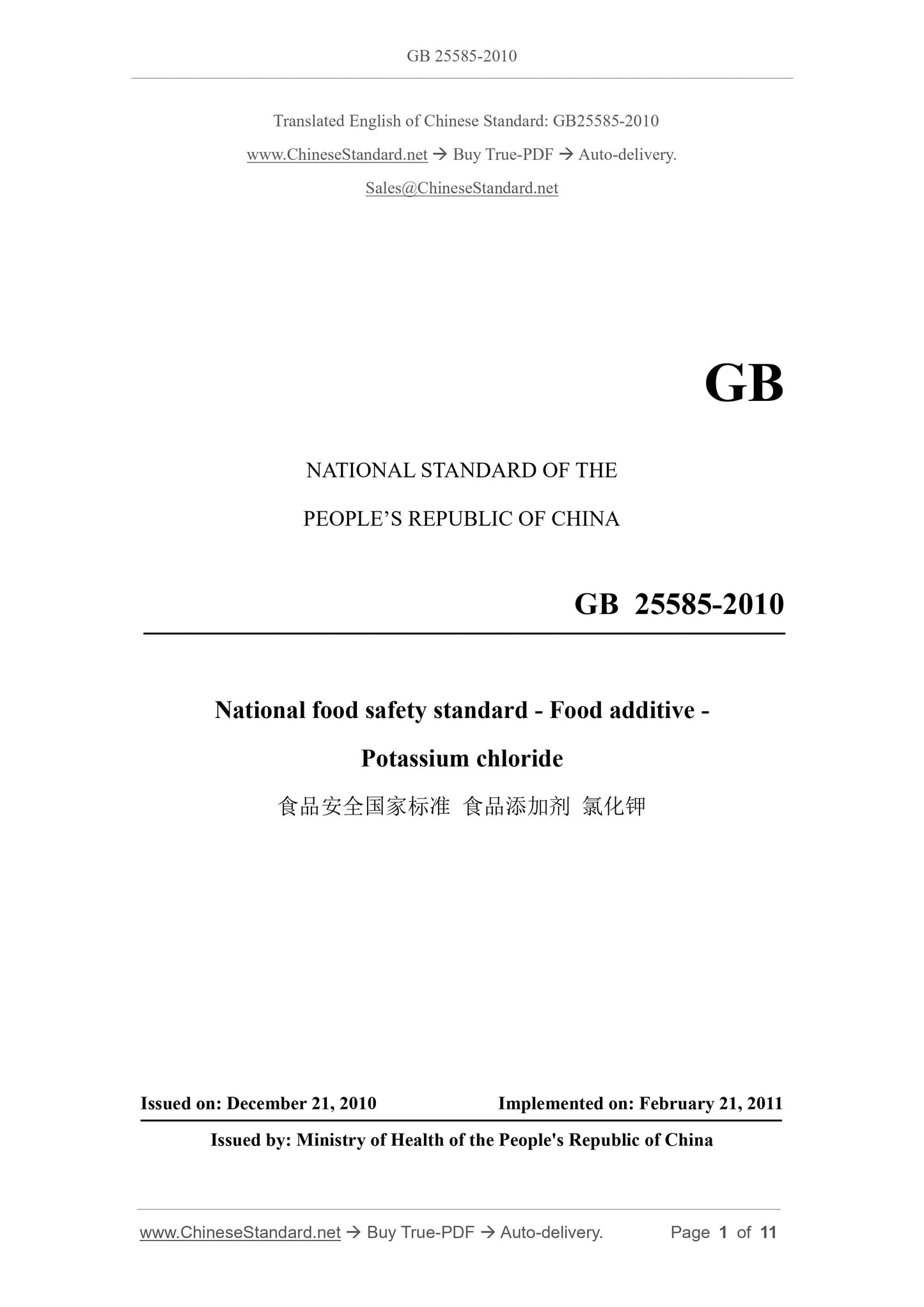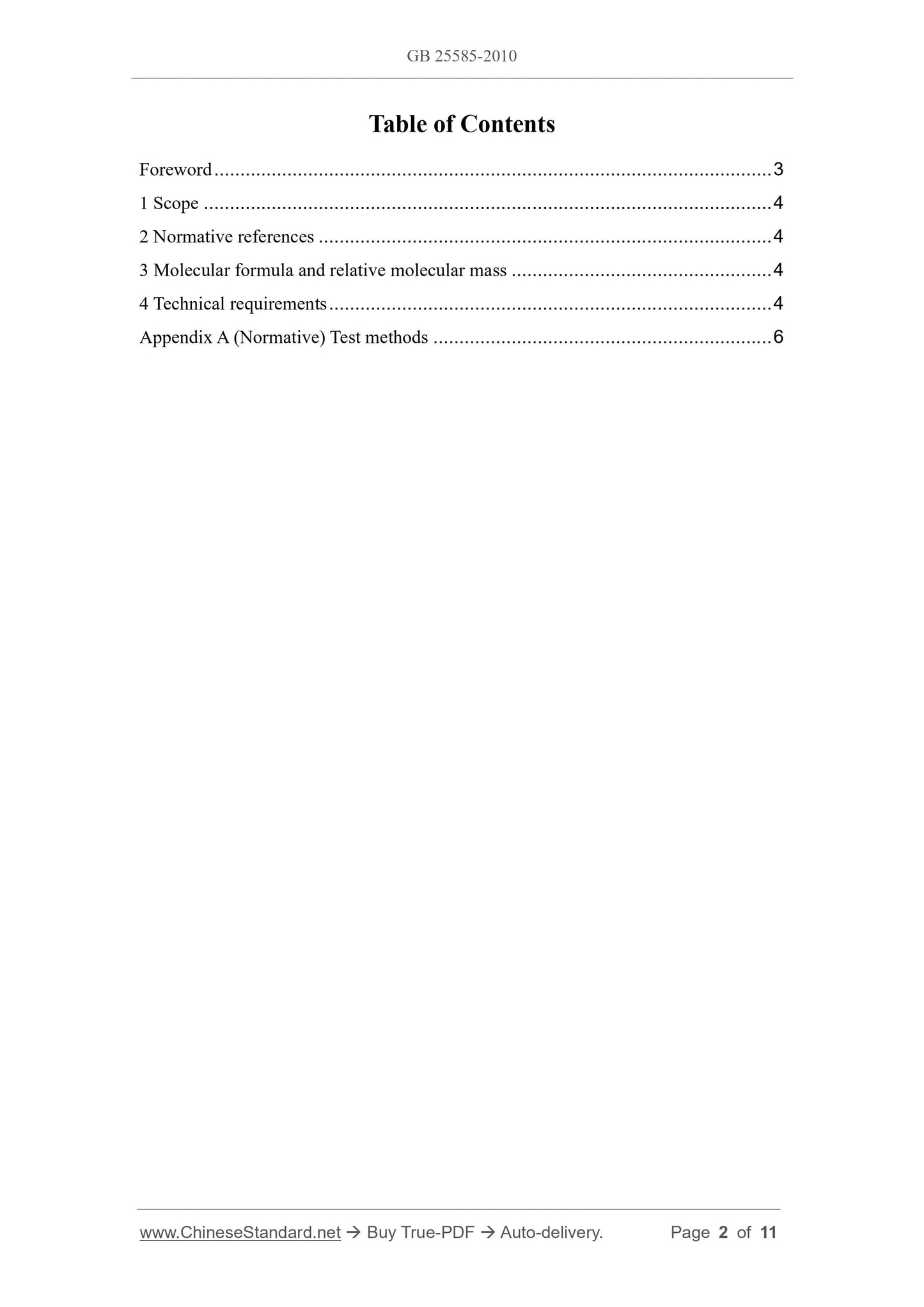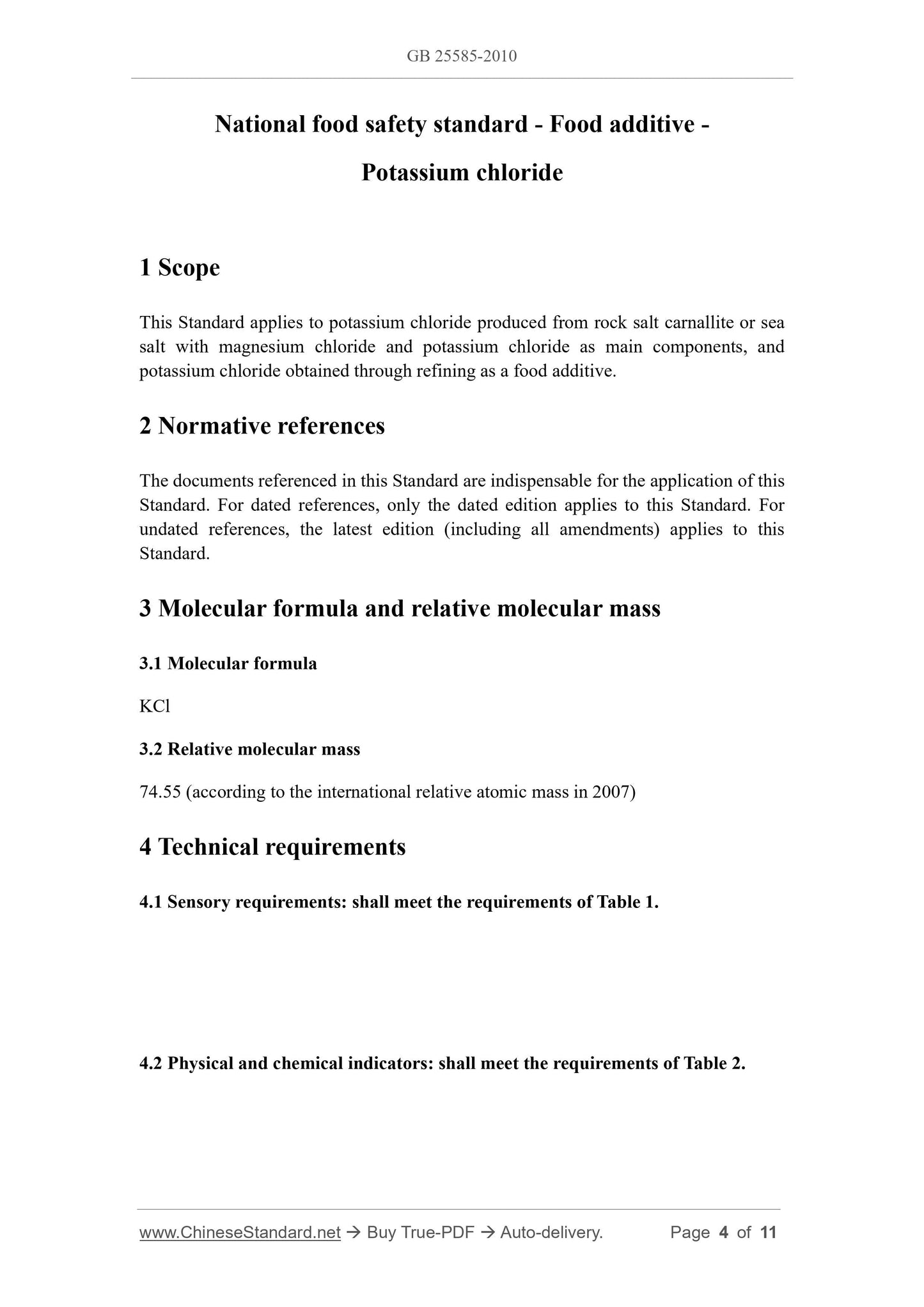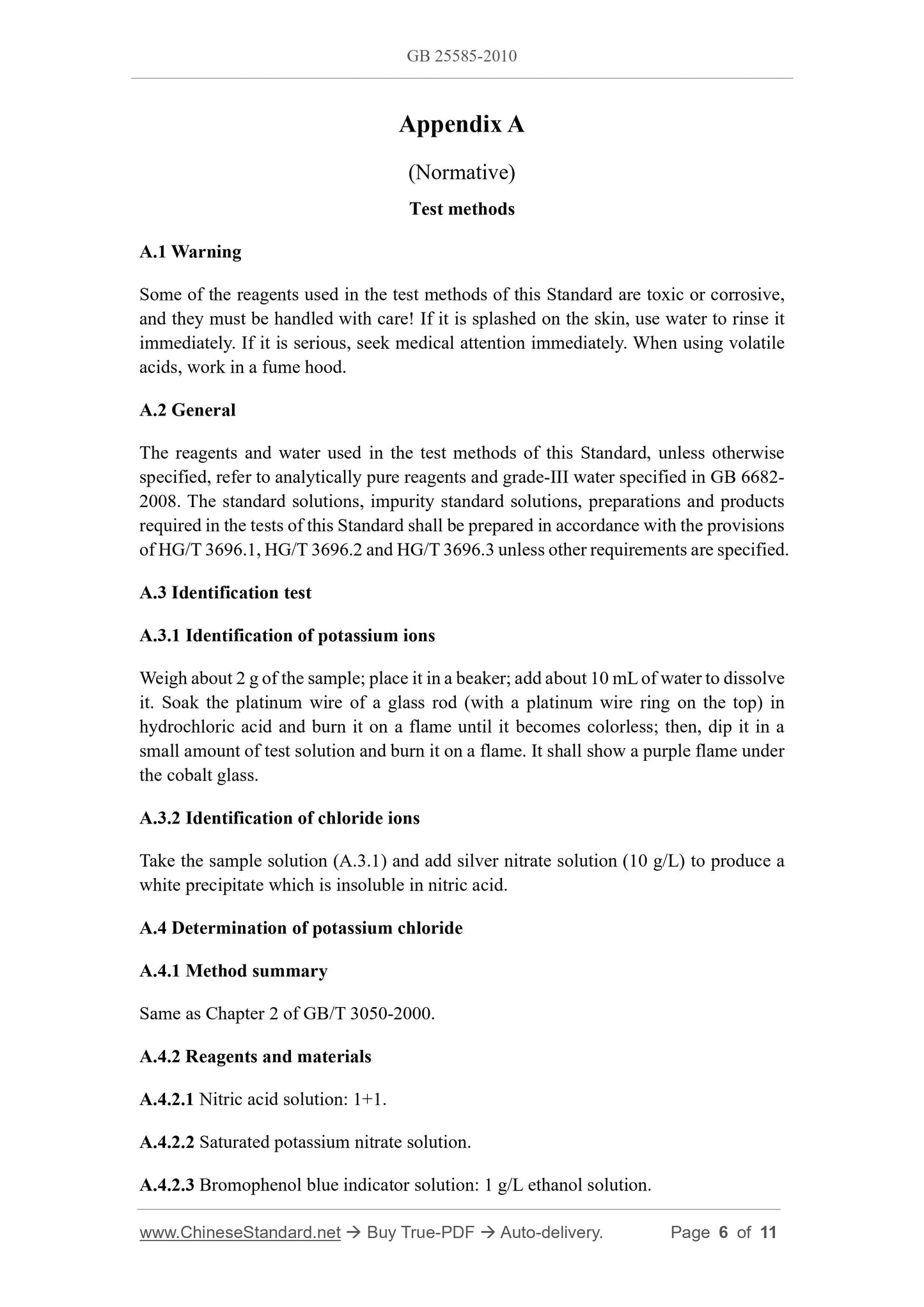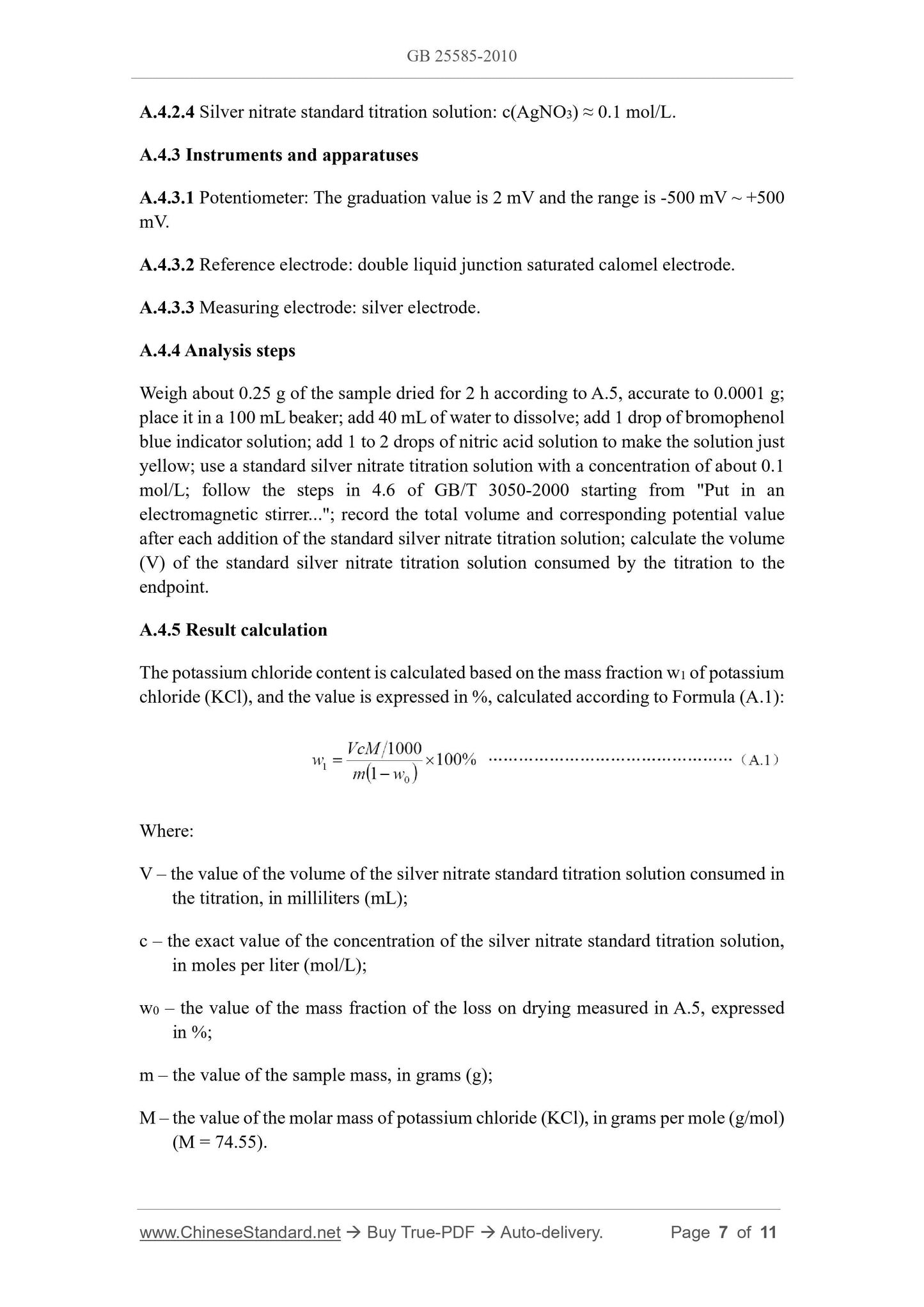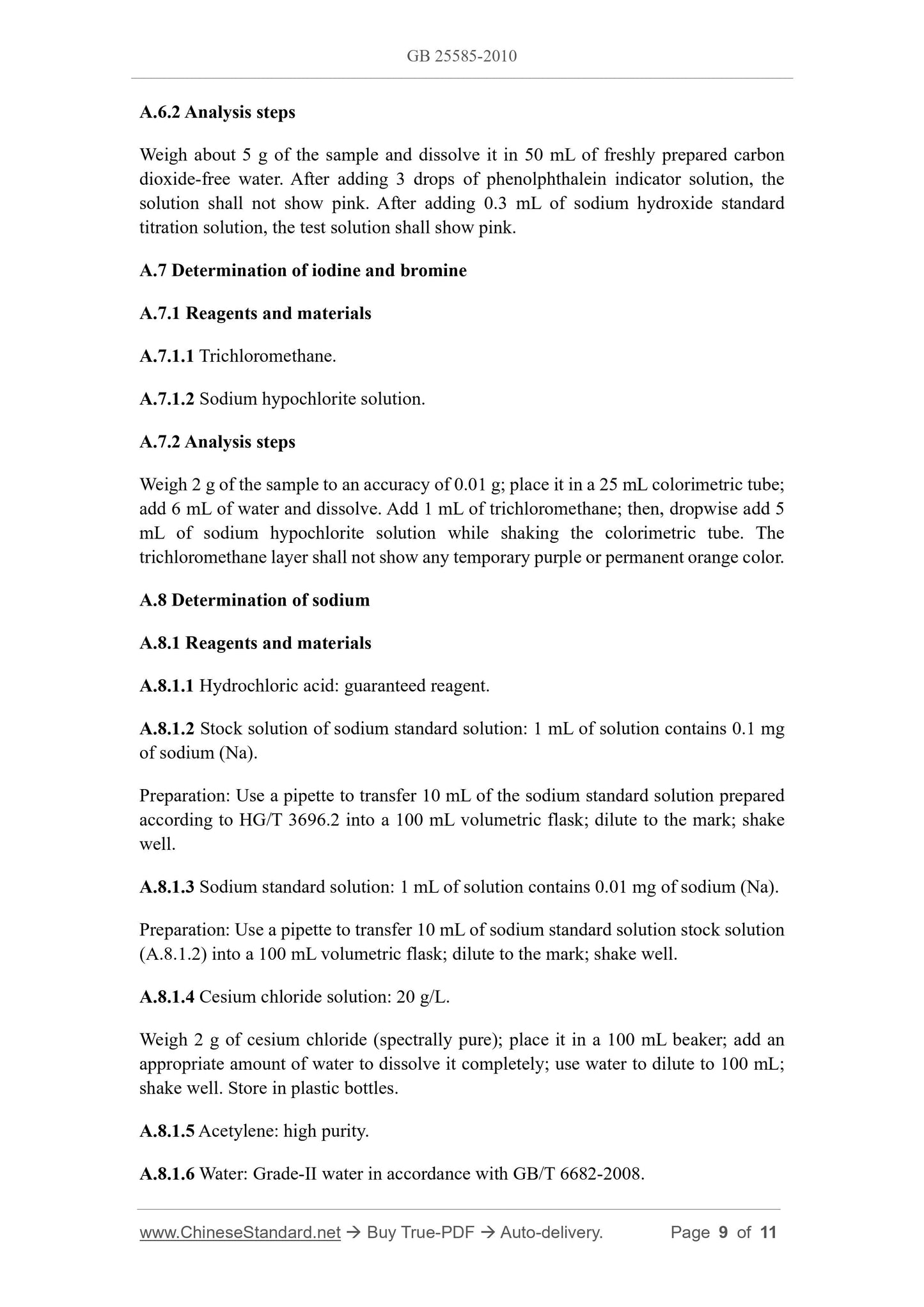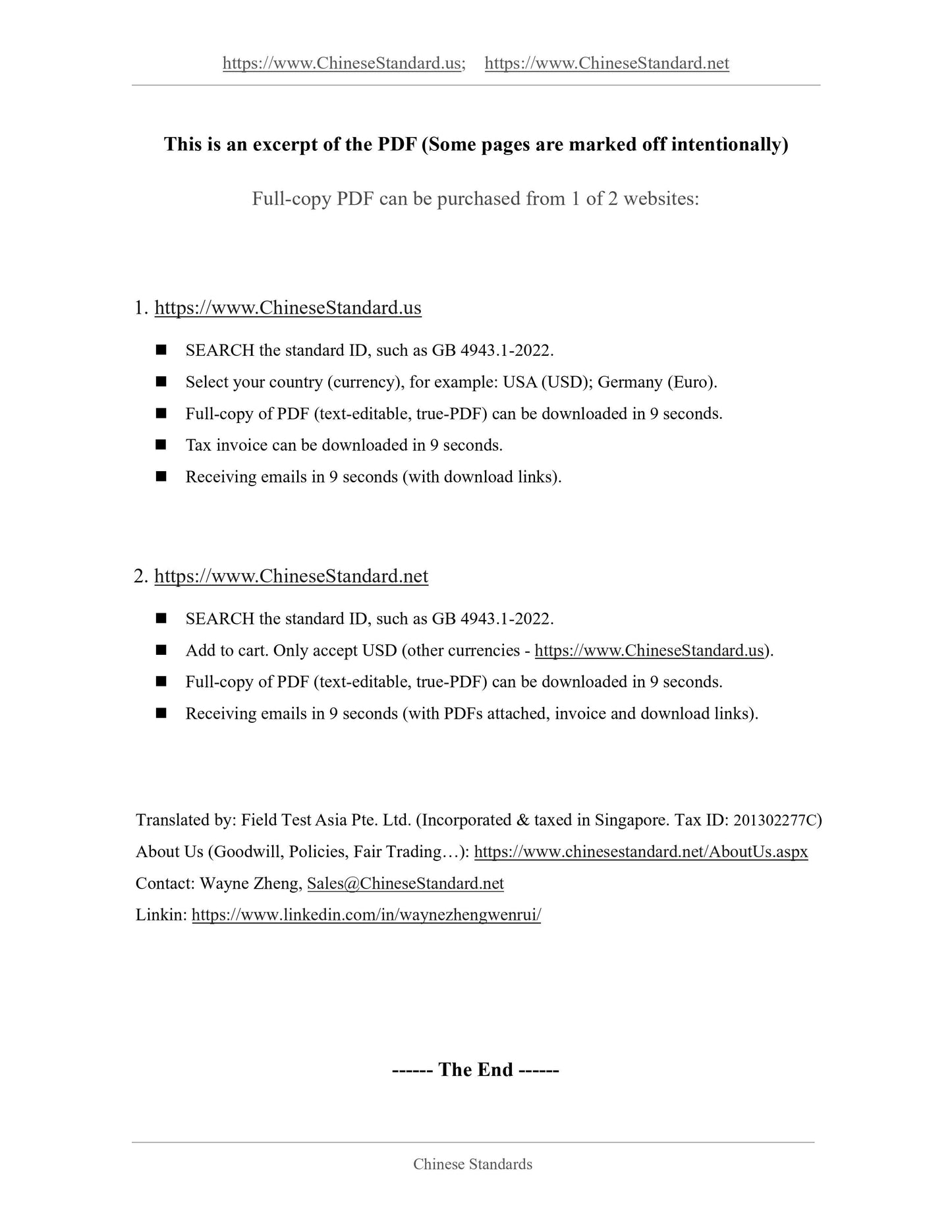1
/
of
7
www.ChineseStandard.us -- Field Test Asia Pte. Ltd.
GB 25585-2010 English PDF
GB 25585-2010 English PDF
Regular price
$170.00
Regular price
Sale price
$170.00
Unit price
/
per
Shipping calculated at checkout.
Couldn't load pickup availability
GB 25585-2010: National food safety standards of food additive potassium chloride
Delivery: 9 seconds. Download (and Email) true-PDF + Invoice.Get Quotation: Click GB 25585-2010 (Self-service in 1-minute)
Newer / historical versions: GB 25585-2010
Preview True-PDF
Scope
This Standard applies to potassium chloride produced from rock salt carnallite or seasalt with magnesium chloride and potassium chloride as main components, and
potassium chloride obtained through refining as a food additive.
Basic Data
| Standard ID | GB 25585-2010 (GB25585-2010) |
| Description (Translated English) | National food safety standards of food additive potassium chloride |
| Sector / Industry | National Standard |
| Classification of Chinese Standard | X42 |
| Classification of International Standard | 67.220.20 |
| Word Count Estimation | 9,924 |
| Date of Issue | 2010-12-21 |
| Date of Implementation | 2011-02-21 |
| Regulation (derived from) | Ministry of Health Bulletin No. 19 of 2010 |
| Issuing agency(ies) | Ministry of Health of the People's Republic of China |
| Summary | This Chinese standard applies to magnesium chloride and potassium chloride as the main component of rock salt or sea salt carnallite production of potassium chloride, refined food additives derived from potassium chloride. |
Share
